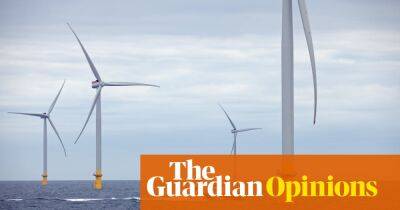Offshore wind could blow us out of the water, say Cornish fishers
As the fishing boat motors gently out of Newlyn’s harbour, the sky is clear and the sea is millpond-flat. Below the surface, the clear waters are teeming with life; Newlyn, in south-west Cornwall, is home to one of Britain’s largest trawler fleets, with more than 100 boats regularly landing catches. However, miles out to sea, a storm is brewing.
The boats’ fishing ground could end up being squeezed by floating windfarms planned for the Celtic Sea, an area of the Atlantic bordered by Cornwall, south-west Wales, southern Ireland and the north-western edge of France. In July, the crown estate – the Queen’s property manager and owner of the seabed around England, Wales and Northern Ireland – announced that five sites in the Celtic Sea could host offshore installations that could deliver four gigawatts of wind energy by 2035. Up to 300 turbines would power nearly 4m homes, and generate income for the crown and the Treasury.
An auction last year of other plots off England and Wales saw unprecedented interest from energy companies, driving bids to record levels, with the crown estate set to receive up to £9bn over the next decade. Those zones are expected to house six new windfarms, generating enough electricity for 7m homes, and could be an essential step in the drive to decarbonise the UK’s power system.
The plans are the talk of the port in Newlyn, and are being met with trepidation in Britain’s shrinking domestic fishing industry.
In the chilly halls of the town’s seafood market, fishers such as Chris Nowell, bearing a box of line-caught sea bass and pollock, arrive throughout the day with their silvery catch, which is assessed, weighed and packed in ice. More than 50 species pass through the market, from megrim (also known as
Read more on theguardian.com



![Will these Solana [SOL] updates finally be enough to push the price - ambcrypto.com](https://finance-news.co/storage/thumbs_400/img/2022/9/25/42316_qtsgu.jpg)













![How Terra [LUNA] buyers can leverage this strategy to optimize their returns - ambcrypto.com](https://finance-news.co/storage/thumbs_400/img/2022/9/25/42301_yll.jpg)



